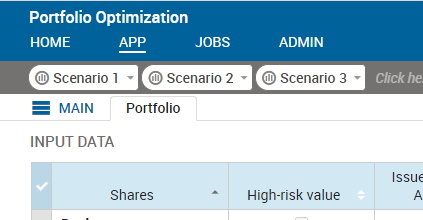Configuring Custom Scenario Types
A scenario that is active in the app is represented by a pill icon placed on the shelf.

The appearance and the associated functionality can be controlled using Custom Scenario Types.
Configure Pill Appearance
-
shelf-pill-style: colors used when the pill is in various states. Any valid css color definition can be used. state-icons: icons shown when the scenario is in a specific state (such as unloaded, loaded and so on). These are specified as paths to a 14px square.pngfile that has been uploaded to the client resources folder of the app.

|
Note: For more on where these tags are configured see the
Example Scenario Type Configuration.
|
Configure Scenario Actions
The Custom Scenario Type definition in the companion file can be configured to allow or deny each associated action. Actions in a custom scenario type will default to the deny setting unless otherwise configured.
|
|
If you omit the actions block from the Custom Scenario Type definition, all actions will be allowed. If you define an actions block, only the actions listed in the definition and set as allowed are enabled for that scenario type.

|
Note: These actions are only prevented through the standard web-client UI. It is still possible to use VDL, the JS API or the REST API to invoke this behavior.
|
© 2001-2025 Fair Isaac Corporation. All rights reserved. This documentation is the property of Fair Isaac Corporation (“FICO”). Receipt or possession of this documentation does not convey rights to disclose, reproduce, make derivative works, use, or allow others to use it except solely for internal evaluation purposes to determine whether to purchase a license to the software described in this documentation, or as otherwise set forth in a written software license agreement between you and FICO (or a FICO affiliate). Use of this documentation and the software described in it must conform strictly to the foregoing permitted uses, and no other use is permitted.

